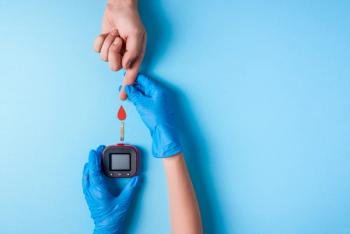
Optimizing Usage of Insulin Pens and Strategies to Educate Patients
Experts provide suggestions for optimizing patient education by encouraging patient engagement.
Episodes in this series

Jerry Meece, RPh, CDCES, FACA, FADCES: Even with insulin pens, we need to drill down a little more in making sure our patients are using insulin pens [correctly]. What have you seen as far as what patients need to know about insulin pens and using them correctly? Sometimes if we aren’t careful, we put a label on a box, it goes out to the patient, and the patient has gone home, they’re looking at this saying, “What do I do again?” There are so many questions. Do you have advice or recommendations about what can we tell someone in that 3-min timeframe about insulin pens and how to use them properly?
Jennifer D. Goldman, RPh, PharmD, CDCES, BC-ADM, FCCP: We need to use really good listening skills, because it’s easy for us to just say, “Do this.” Ask them, “How did your doctor tell you to use this? How did your provider tell you to use this pen? Walk me through it.” Sometimes you can identify problems by having them say out loud what they’re going to do.
I wrote a paper a while back about this: problem solving with insulin administration issues. A couple of things that I wrote about included things like patients’ blood sugars not improving because they’re dialing up the pen to the right dose, putting the needle in, and then dialing it back and not actually pushing the button. Without having it out loud or visualizing it, we might have missed that. Another one is that sometimes when you problem solve by asking, they take the top cover off of the pen but not the inner cover, and they never actually get the injection.
The other thing we have to tell people and remember is that these insulin pen needles are very small. They’re the size of an eyelash. They’re very thin, so we need to remind people to be gentle. They don’t want to be stabbing it in themselves like a dart. Be very gentle. In the 1 or 2 minutes we have, I make sure they tell me how they’re going to take this. Walk me through it. Just make sure, and give them that opportunity. Don’t say, “You know how to use this, don’t you?”
Jerry Meece, RPh, CDCES, FACA, FADCES: Right. It happens. One last thing: because we work so hard to get the dose right, that 10 units is 10 units, when this insulin injection goes in, your pen is a pressurized system. As you push it in, if it’s 10 units, push it all the way to 0 and get your 10 units in. But now do a slow count of 5 or 6 seconds to make sure the needle stays in there long enough for all that insulin to be absorbed. If I push it in, inject, and pull it out, there’s a chance of a small amount of leakage of insulin, which affects the dose. Putting it in, watching them do it, doing a slow count to 6, and then withdrawing the needle are things that have to be done.
Periodically, as they come back in—especially if we start seeing erratic numbers—we need to say, “Show me how you’re using this pen. We have props. Here’s something that we have. Show me how you’re injecting your insulin.” The surprises and comparisons we could make on what they do is amazing. It’s something we need to be aware of as pharmacists, and we can do this really quickly.
At one point, we thought that with all the pure insulins and thinner needles, we were through with these problems of lipohypertrophy—another jargon phrase that our patients won’t understand until we explain it to them. But the later studies have shown that lipohypertrophy occurs in our patients anywhere from 25% to 64% of the time, if you look at the latest study that was out of the Cleveland Clinic. It’s very common and it’s so overlooked. How does lipohypertrophy occur? How does it affect the patient overall? How does it affect absorption? How should we check to identify lipohypertrophy? Do you like it when I give you 3 or 4 questions at a time?
Jennifer D. Goldman, RPh, PharmD, CDCES, BC-ADM, FCCP: Yes, bring it all on. I’m glad you brought this up, because it’s very important and it isn’t thought about commonly. It’s fascinating, because people who use multiple daily-dose injections are at a really increased risk of lipohypertrophies. This is why we have to remind people to rotate their sites. When you ask someone, “Do you rotate your sites?” They’re going to say, “Yes.” You’re going to say, “Where do you inject your insulin? Explain it to me.” I have seen lots of people with lipohypertrophies. Usually it’s a new patient. I see it more commonly with type 1.
When you have a lipoypertrophy, it’s like a little spot or lumps that appear, and it’s like scar tissue. When people inject over and over in that same spot, that’s where it occurs, and it can lead to erratic insulin absorption. If patients have a lipohypertrophy, they might say they have a lump or something unsightly. It’s important for this to be inspected in patients at their physical, if not more often, to make sure they’re rotating, because it can make such a big difference. [That can help] if their blood sugars aren’t sustained in a good way and are going up and down, and you’re trying to figure out why.
Jerry Meece, RPh, CDCES, FACA, FADCES: One of the first times I’m suspicious is when you suddenly start getting erratic blood glucoses. At one point, they’re 220 mg/dL, and then they go down to 60 mg/dL, and you’re trying to understand. But the first thing you need to ask is “Where are you injecting?” They might say, “I always inject to the right side here because it doesn’t hurt any, and it works really well for me.” Help patients understand that moving that around, there’s a certain way we need to go. There are 2 or 3 ways to change insulin injections: just a 2 finger-width move from the umbilicus, and all the way around in a rainbow fashion. If you show patients that we need to move these injections around, it would almost eliminate lipohypertrophy. It’s a simple thing to do, but it’s such a big factor. I agree with you.
Transcript edited for clarity.
Newsletter
Pharmacy practice is always changing. Stay ahead of the curve with the Drug Topics newsletter and get the latest drug information, industry trends, and patient care tips.





































































































































